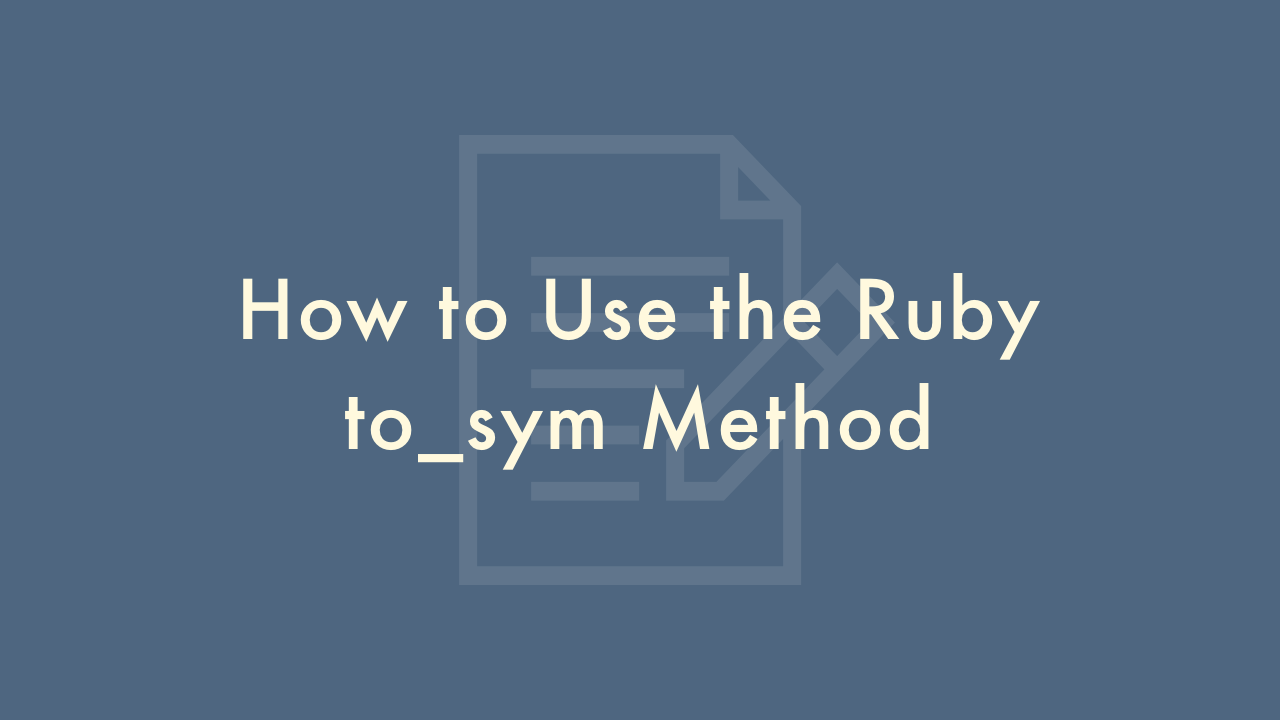How to Use the Ruby to_sym Method

Contents
In this article, you will learn how to use the Ruby to_sym method.
Using the to_sym method
The to_sym method is a Ruby method that is used to convert a string into a symbol. Symbols are immutable and unique identifiers that can be used as keys in a hash or for other purposes where an immutable object is required. The to_sym method is particularly useful when working with hashes and symbols because it allows you to use symbols as keys instead of strings, which can be more efficient and easier to work with.
Here’s an example of how to use the to_sym method:
string = "hello"
symbol = string.to_sym
puts string #=> "hello"
puts symbol #=> :hello
In this example, we start with a string “hello” and use the to_sym method to convert it to a symbol :hello. Notice that the symbol is preceded by a colon, which is how symbols are represented in Ruby.
One common use case for to_sym is to convert a hash with string keys to a hash with symbol keys. Here’s an example:
hash = { "name" => "Alice", "age" => 30 }
symbolized_hash = hash.transform_keys(&:to_sym)
puts hash #=> { "name" => "Alice", "age" => 30 }
puts symbolized_hash #=> { :name => "Alice", :age => 30 }
In this example, we start with a hash hash with string keys and use the transform_keys method to convert the keys to symbols using the to_sym method. The &:to_sym syntax is shorthand for passing a block that calls to_sym on each key.
It’s important to note that symbols are not always the best choice for keys. In particular, if your keys are user-provided strings, it’s usually better to keep them as strings to avoid symbol table bloat. Additionally, if you need to manipulate keys (e.g., concatenating them), you should use strings instead of symbols.